![]()
- Active Divers 2019 International Dive Trips-Selling Fast!
- Time to Renew
- Sea Turtle Identification
- Time for a New Aquarius Mission
- The Buffalo of the Sea
- Diving for Dollars
- Humpback Whales
- Shark Facts: #5 in the Series
- Sunscreen Ban?
- Social Plastic?
- Newsletter Delivery Options
- Email or Address Change?
- T-Shirts For Sale
- Active Divers Guidelines & Policies
2018 is barely over and our 2019 slate of trips is already getting full! So here is a short update:
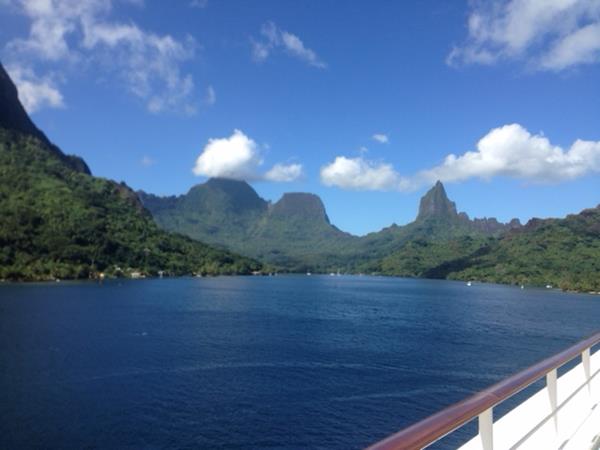 Tahiti: Seven cabins have been booked on
the Paul Gauguin cruise ship, sailing from June 1 to June 8, 2019. For
all of those that were signed up I was able to find a short term
promotion that dropped the rate by up to $1,000 per person, depending
on the cabin booked. Because of that, those that sign up in the future
will be getting the prices available at that time. We have five rooms
booked on the land based trip to Bora Bora and Rangiroa (June 8 to
June 17, 2019) and I have both a male and female diver looking for a
roommate/dive buddy for this trip. Due
to the nature of the flights we may become limited based on available
airline seats so if you are interested I urge you to book now. Full
details on this trip can be found at https://www.activedivers.site/Tahiti2019.html
Tahiti: Seven cabins have been booked on
the Paul Gauguin cruise ship, sailing from June 1 to June 8, 2019. For
all of those that were signed up I was able to find a short term
promotion that dropped the rate by up to $1,000 per person, depending
on the cabin booked. Because of that, those that sign up in the future
will be getting the prices available at that time. We have five rooms
booked on the land based trip to Bora Bora and Rangiroa (June 8 to
June 17, 2019) and I have both a male and female diver looking for a
roommate/dive buddy for this trip. Due
to the nature of the flights we may become limited based on available
airline seats so if you are interested I urge you to book now. Full
details on this trip can be found at https://www.activedivers.site/Tahiti2019.html
 Bonaire:
10 of the twelve rooms are already booked, and while I may be able to
get more rooms, we may be limited by the dive boat space, so if you are
interested in this trip I urge you to put down your deposit NOW. See the
details at https://www.activedivers.site/Bonaire2019.html
Bonaire:
10 of the twelve rooms are already booked, and while I may be able to
get more rooms, we may be limited by the dive boat space, so if you are
interested in this trip I urge you to put down your deposit NOW. See the
details at https://www.activedivers.site/Bonaire2019.html
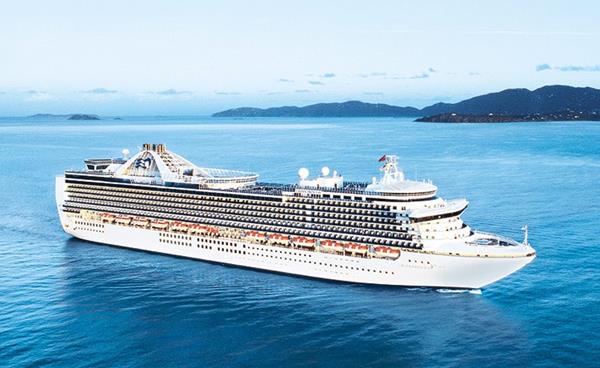 2019 Dive
Cruise: Four cabins are already booked on the brand new
(still being built!) Sky Princess. With a world class dive itinerary
(Grand Cayman, Roatan, Costa Maya and Cozumel) departing December 7,
2019 for seven days from Fort Lauderdale, this one is very likely
going to sell out. See the details at https://www.activedivers.site/
2019 Dive
Cruise: Four cabins are already booked on the brand new
(still being built!) Sky Princess. With a world class dive itinerary
(Grand Cayman, Roatan, Costa Maya and Cozumel) departing December 7,
2019 for seven days from Fort Lauderdale, this one is very likely
going to sell out. See the details at https://www.activedivers.site/
![]()
The clock is counting down and we are nearing the last chance to renew at a reduced rate. Renew before March 31, 2019 and your membership fee is only $35 for a calendar year of discounts and diving news. After March 31, your annual membership renewal fee is $49.
Your membership includes periodic eNews emails about club activities as well as electronic access to The Mouthpiece monthly newsletter. You may pay by check or online. Go to https://www.activedivers.site/Membership_Renewal.html to renew your membership online. Instructions for paying by check may be found there as well.
Members who have a credit from 2018 have the option to either request a full refund or apply $35 of their refund toward the discounted rate for their 2019 membership. In the later case, the balance will be refunded and a check will be mailed to the address of record in our membership file. If you wish to request a full refund, contact Lon at lon@diverlon.com. No action is required if you want $35 applied to your 2019 membership or to extend your membership one year.
Please Note: If you think you purchased an extended membership sometime in the past, but unsure when it expires, drop us a note at ActiveDiversInfo@gmail.com, and we will let you know by return email. Please include your name and "Membership Expiration Date" in the subject line.
![]()
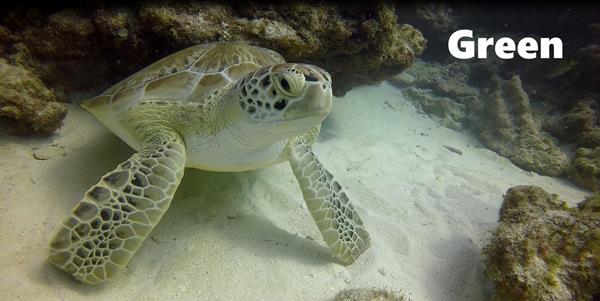
One of the most exciting things that can happen on a dive is to encounter a sea turtle. According to NOAA, during summer months, it is estimated that there are approximately 50,000 turtles in Florida waters. The main species that Florida divers will encounter (in order of abundance) are loggerhead, green, and hawksbill. There are other turtles found in Florida but seldom seen by divers such as the rare Kemp's Ridley, or the leatherback, who can dive down to 3,000 feet and do not live on reefs.
 I dove for many
years before I could tell the difference between the various turtles I
encountered. But there are simple ways to distinguish between the
three species of turtles most commonly found on Florida reefs.
Loggerheads are abundant, and the most commonly seen turtle in our
waters. Loggerheads have massive heads and jaws designed to crush
conch and other crustaceans. If you see a dark brown turtle with a
dull, brown shell and a very large head, chances are it's a
loggerhead.
I dove for many
years before I could tell the difference between the various turtles I
encountered. But there are simple ways to distinguish between the
three species of turtles most commonly found on Florida reefs.
Loggerheads are abundant, and the most commonly seen turtle in our
waters. Loggerheads have massive heads and jaws designed to crush
conch and other crustaceans. If you see a dark brown turtle with a
dull, brown shell and a very large head, chances are it's a
loggerhead.
If you see a smaller light brown turtle with a narrow shaped head
and a pretty brown and yellow pattern on its shell, chances are it's a
green turtle. Green turtles get their name not because they are green,
but because their fat is green from feeding on algae and sea grass.
Green turtles were over-harvested for many years to make turtle soup
before they were protected. 
The least abundant turtle you will encounter in Florida is the Hawksbill, but these turtles are the most common ones you'll see in the Caribbean. The Hawksbill's most prominent feature is its mouth shaped like a beak, or literally a hawk's bill. This mouth is adapted for eating sponges, their primary food source. Their bodies are small and their shells are a beautiful brown and green marbled pattern, once abundantly harvested for jewelry before protection. You can also identify a Hawksbill by the bottom edge of their shell being serrated in a saw tooth pattern.
There are many guides that demonstrate more specific ways to tell turtles apart, such as counting the scutes or tiles on their backs. These guides are helpful, however, most turtle encounters in the wild are brief, and identification must be made quickly at a glance. Hopefully this guide will help you identify the next turtle you encounter in the wild.
Reference guides for sea turtle identification:
- https://myfwc.com/research/wildlife/sea-turtles/florida/species/
- https://conserveturtles.org/information-about-sea-turtles-species-identification-key/
- http://oilspill.fsu.edu/images/pdfs/turtle-id-placard.pdf
- http://www.aoml.noaa.gov/outreach/floridaseagrant/pdf_files/TropicalConnections_5SpeciesSeaTurtles_KruczynskiFletcher.pdf
![]()
Aboard Aquarius in 2019?
--by Roy D. Wasson
Active Divers Conservation Projects Director
roy@wassonandassociates.com
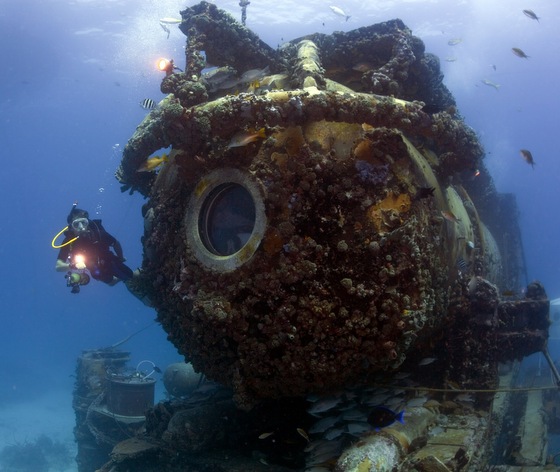
Aquarius
Exterior
Tired of diving the same old reefs and wrecks that everybody and his sister visits during dive season? How would you like to plunge into a dive adventure so rare that fewer than one in ten thousand certified divers have experienced it before you? Most of those lucky few have been dive professionals, marine scientists, NASA astronauts, and others studying everything from dive physiology to ocean chemistry. But also among the select few divers in the world to experience a mission in the Aquarius Underwater Laboratory and Habitat are eleven intrepid Active Divers Association members who earned their fins as Honorary Aquanauts. This article is intended to investigate your interest in exploring the possibility of setting up another such Active Divers mission to Aquarius in 2019.
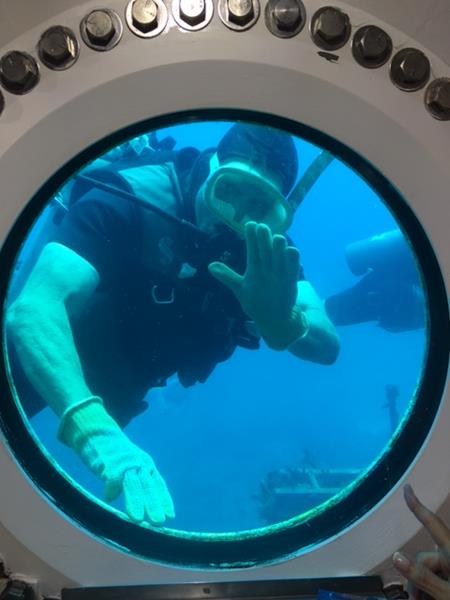 Aquarius is a
complex diving system that consists of the lab below the ocean; a life
support buoy on the surface that houses power generators, air
compressors and data connections; and a mission control center in
Islamorada. Submerged since 1993 in sixty feet of water in the Florida
Keys Marine Sanctuary, nine miles offshore, Aquarius is the world’s
only permanent underwater laboratory. Using a technique known as
saturation diving, Aquarius Aquanauts can spend days to weeks under
water conducting research that cannot be accomplished anywhere else on
the planet.
Aquarius is a
complex diving system that consists of the lab below the ocean; a life
support buoy on the surface that houses power generators, air
compressors and data connections; and a mission control center in
Islamorada. Submerged since 1993 in sixty feet of water in the Florida
Keys Marine Sanctuary, nine miles offshore, Aquarius is the world’s
only permanent underwater laboratory. Using a technique known as
saturation diving, Aquarius Aquanauts can spend days to weeks under
water conducting research that cannot be accomplished anywhere else on
the planet.
Aquarius was built in Victoria, Texas in 1986. Underwater operations first began in the United States Virgin Islands, in St. Croix’s Salt River Canyon (now a national park and previously home to Hydrolab, the predecessor to Aquarius), in 1988. After 13 missions (and Hurricane Hugo), Aquarius was relocated to Wilmington, North Carolina where it was refurbished over an 18-month period by the National Undersea Research Center at the University of North Carolina Wilmington (UNCW). Aquarius remained in Wilmington until 1992 when it was deployed in to the Florida Keys National Marine Sanctuary four miles off Key Largo.
![]()
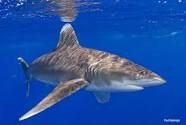 We all have seen pictures of buffalo running across
the plains in copious amounts. So many, it would appear they would
never be endangered. But in a few short years, man managed to do it.
Well, the same happened to oceanic whitetip sharks. They were as
plentiful as the buffalo, probably more so. But along came the fishing
industry and the need for shark fins. Well, why not start with the
most plentiful? Now these great creatures are rare.
We all have seen pictures of buffalo running across
the plains in copious amounts. So many, it would appear they would
never be endangered. But in a few short years, man managed to do it.
Well, the same happened to oceanic whitetip sharks. They were as
plentiful as the buffalo, probably more so. But along came the fishing
industry and the need for shark fins. Well, why not start with the
most plentiful? Now these great creatures are rare.
They were once thought to be the most numerous pelagic sharks in the ocean. They were characterized as the most abundant large animal (over 100 pounds) on the earth. They are graceful, but dangerous. .
Recall the Japanese sinking of the U.S.S. Indianapolis in WWII? It was sunk by a Japanese torpedo from a submarine. There were 1,200 sailors onboard. 900 made it into the ocean. They had a chance at survival until the oceanic whitetip showed up. Only 317 survived that attack. Nothing can assuage the families of the sailors that perished that day, but the near loss of species is felt worldwide.
Jacques Cousteau called the whitetip the most dangerous shark in the world. Even with that label I still would like to view one in the wild..... from a safe distance!
![]()
Youth Divers Looking Ahead/Looking Around
 In just a few months, 2019
scuba scholarships, internships and training grants will be announced.
Now is a great time to get your ducks in a row and start thinking
about the applications and essays that could help you score a few
dollars for diving.
In just a few months, 2019
scuba scholarships, internships and training grants will be announced.
Now is a great time to get your ducks in a row and start thinking
about the applications and essays that could help you score a few
dollars for diving.
Regardless of your dreams and aspirations, no matter what form of career training may inspire you, it pays to research the scholarships available to help you reach that goal. There’s a lot of money out there just waiting to find its way into the wallets of qualified students but you’ll have to do your homework if you want to get your studies funded.
Tips for Getting Scuba Scholarships
Start early: Scholarship applications often include several requirements. Make sure you give yourself ample time to assemble your application package.
![]()
Let’s turn our sights to central America. Specifically, Lake Nicaragua. If you ever took an airplane anywhere here, you saw it. It is enormous, and those volcanoes look awesome, right out of a Hollywood mystery. Yes, sharks are in its harbors and that is the connection. That and death. Well sharks and death go hand-in-hand. You see, the natives buried their dead with an elaborate ceremony by coving the dead with gold and then sending them into the lake forever. That is, until the sharks ate them. But an enterprising man (a Dutchman) decided to start lining the sharks and harvesting the gold from their stomachs. Man, that is original. He became very wealthy. UNTIL, the natives discovered his secret. They were not happy with what he had done to their precious offerings. So, per usual, they slit his throat and burnt his hut. Since his corpse was unfit for the sharks he was carbonized in a local fire. Somehow, I believe alcohol may have been involved but I have no proof.

If that isn’t crazy let’s turn to Samuel Clemens (a.k.a. Mark Twain). He believed that Cecil Rhodes caught a shark near the Australian coast and cut open its stomach (this is a recurring theme, almost like the Bible) and found a newspaper. In the paper it was written that the wool market had shot up enormously lately in London. Well, with this insider information he bought up stocks of wool and turned it into a fortune.
Now, who wouldn’t recognize this as a fish story but Mark Twain. Probably believed his own fiction about Huck.
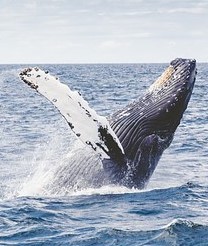
There were approximately 250,000 humpback whales in the North Atlantic before whaling began. Now there are 12,000, not exactly a huge amount. They need protection. But with Orcas as their main predator, it doesn’t forebode well.
There has been progress. In 1986 a global moratorium was placed on whale hunting. Humpbacks have now been moved from endangered to vulnerable.
Here is a strange fact, at least to me. The males attract females for birthing by their singing. That would leave me out of the gene pool. The females are pregnant for one year. Their calves swim immediately.
Humpbacks whales are 6 times heavier than elephants, that’s about 40 tons. They reach 60 feet in length. They are divided into 3 sub-groups: North Pacific, North Atlantic, and southern Hemisphere.
Next time you have the chance to go on a whale-watching expedition, take it! I have been on a couple and they are amazing.
Want your newsletter delivered via snail-mail? Contact the webmaster and request a printed copy. Be sure to put "Active Divers Newsletter" in the subject.
![]()
If so, please email or call us with your current information. You may send an email to: Dr. Dan Baeza, Membership Chair at ActiveDiversInfo@gmail.com.
![]()
Monroe County is considering the ban of some types of sunscreen. Based on scientific research which shows oxybenzone and octinoxate are harmful to corals, they will have the first of the two required readings Jan. 15. In July, Hawaii passed legislation to ban the sale of sunscreen containing these two chemicals by 2021. Palau and Mexico have also ban them. "Hawaii-compliant" sunscreens are readily available at Walgreens and other retailers. Check the ingredients label and avoid sunscreens with those two chemicals.
Active Divers T-Shirts For Sale
Show your pride in the best dive club anywhere! Sizes small, medium, large, xlarge, xxlarge. Some tank tops available also. All shirts are $10 each. CALL LON AT 305-251-4975 AND PLACE YOUR ORDER TODAY!. Lon will deliver it to you on your next dive

Now what the heck is social plastic? It is a great new concept to help remove plastic from our environment and oceans. Here is how it works.
People are paid for their plastic collected. “Well”, you say, “that is going on at recycle centers all the time.” Correct, but now this has been added. These places pay more than the recycling centers, a premium. The waste is collected by independent people and deposited at the “Plastic Bank”. These banks pay the premium. Thus, giving the people an incentive and not having to compete with the re-cycling centers.
This trash then can be used for fuel, food, block chain, or school fees. Eighty percent of the unwanted plastic is generated in underdeveloped countries. Thus, we are solving the problem where it is the worst. If you have ever visited these countries you will observe the beaches are covered with plastic, except of course, in front of the commercial spots. Then these banks sell it to corporations at a premium, thus the wording social plastic.


 Aquarius
is a globally significant asset that provides unparalleled means to
study the ocean, test and develop state-of-the-art undersea
technology, train specialized divers and astronauts, and engage the
world's imagination. At Aquarius, scientists are at the cutting edge
of research on coral reefs, ocean acidification, climate change,
fisheries and the overall health of the oceans.
Aquarius
is a globally significant asset that provides unparalleled means to
study the ocean, test and develop state-of-the-art undersea
technology, train specialized divers and astronauts, and engage the
world's imagination. At Aquarius, scientists are at the cutting edge
of research on coral reefs, ocean acidification, climate change,
fisheries and the overall health of the oceans.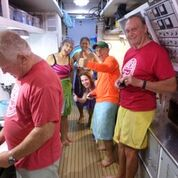 the water from flowing in.
At this depth and pressure, non-saturated visitors to Aquarius have
less than about 80 minutes to visit and return to the surface before
they risk experiencing decompression illness. However, the mission
aquanauts living in Aquarius can stay indefinitely and have 6 to 9
hours of diving outside of the lab down to about 95 feet each day,
with unlimited time at storage depth. At the end of a mission,
aquanauts undergo 15 hours and 45 minutes of decompression that is
conducted within Aquarius itself, while on the bottom. At the end of
decompression, Aquanauts exit Aquarius and ascend with scuba gear
back to the surface.
the water from flowing in.
At this depth and pressure, non-saturated visitors to Aquarius have
less than about 80 minutes to visit and return to the surface before
they risk experiencing decompression illness. However, the mission
aquanauts living in Aquarius can stay indefinitely and have 6 to 9
hours of diving outside of the lab down to about 95 feet each day,
with unlimited time at storage depth. At the end of a mission,
aquanauts undergo 15 hours and 45 minutes of decompression that is
conducted within Aquarius itself, while on the bottom. At the end of
decompression, Aquanauts exit Aquarius and ascend with scuba gear
back to the surface. The
Aquarius program’s commitment to safety and professionalism is
demonstrated by its requirement to use program-issued regulators and
buoyancy compensators, unless prospective aquanauts have
certificates documenting current inspections of their own gear. In
onshore classroom training new aquanauts receive instruction on the
history and purpose of Aquarius, its facilities, and procedures they
will use in visiting and occupying the habitat. They learn about the
role of the shore base, safety measures in place, and the history of
Aquarius in promoting research of the marine environment.
The
Aquarius program’s commitment to safety and professionalism is
demonstrated by its requirement to use program-issued regulators and
buoyancy compensators, unless prospective aquanauts have
certificates documenting current inspections of their own gear. In
onshore classroom training new aquanauts receive instruction on the
history and purpose of Aquarius, its facilities, and procedures they
will use in visiting and occupying the habitat. They learn about the
role of the shore base, safety measures in place, and the history of
Aquarius in promoting research of the marine environment.